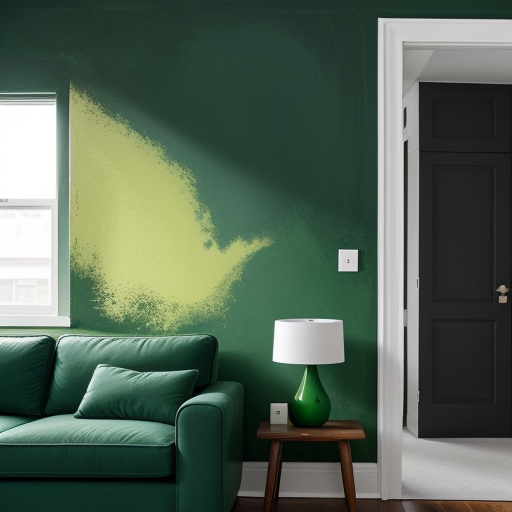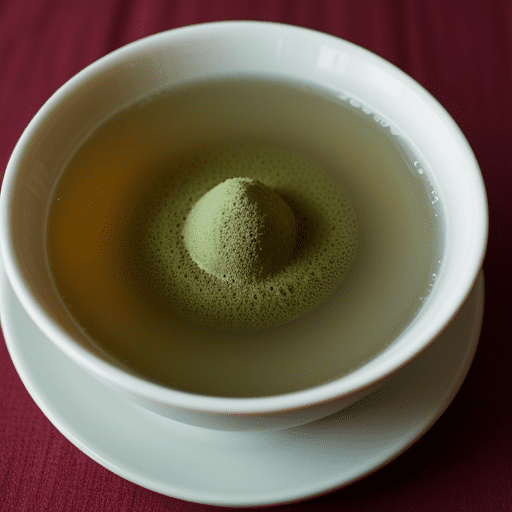Mastering Your Short Game: Tips for an Impressive Putting Green Performance
Perhaps, nothing sums up golf better than to call it a game of inches reminding each and every moment matters as the teeniest mistake multiplies in no time. Although driving and power are important, anyone who has played the game knows that matches can be won or lost on a damp green from 2 feet. Being able to execute those putts comfortably and consistently can get a lot of strokes off the card, as well as keep your confidence up on course. The putting green is the area that most golfers miss when they think it means more strength and distance. This is the difference between making birdie or even bogey. In this article we will explore critical tips and tricks to fine-tune your putting. From the nuances of your putting posture to dialling in that stroke tempo & rhythm, we want you take it all into the short-game and ultimately refine ALL ASPECTS OF YOUR GAME ⛳️✊🏼.
Perfecting Your Stance and Grip
Your grip and stance are the basic elements that sharing in advancing your golf putting green game. The single best exercise for hitting all of the muscles in your posterior chain is one that firmly supports and yet gently nudges you from behind:—Your feet should be a shoulder’s width (hips’ distance) apart with knees slightly flexed to improve balance. It should be an even weight distribution, leaning slightly towards the balls of your feet. This creates a softer and more natural roll.
Your grip should be firm but relaxed. They more commonly utilize an overlapping grip: one in which the little finger of your dominant hand overlaps slightly with the index finger of his other helping you to have a singular motion between both hands. The palms will be facing one another, resulting in a neutral grip which is ideal for smooth putting. This will prevent the wrist from moving when you make a put to avoid an extra flick which nobody wants.
Enough time and exposure to this grip will lay the foundation of your putting, both in terms on accuracy as well confidence on the green. Keep in mind, the correct stance and grip work together as a pair to improve your overall putting form.
Importance of a consistent setup
When it comes to putting having a consistent setup is key if you want to be able dial in your short game. A good routine helps to build muscle memory so that every stroke you execute is the same. The other bonus that comes with this consistency is control over the direction and speed of your ball, which inherently gives you more accuracy. Common components of a repeatable setup are your stance, grip and posture. Get yourself positioned directly over the target line, square your shoulders, and use a comfortable grip. Where you tee the ball—in your stance, typically center or slightly forward—accompanies an optimal stroke path. These fundamentals help acquire consistency, which can lead to the confidence Mankiewicz spoke about as well as strong mental fortitude that is essential when things get dicey on greens rolling at different speeds. Repeating a consistent setup also helps you identify mistakes and fix them quicker which is the recipe to your success on the putting green.
Finding the right grip pressure
Trust The Tension: Getting the Perfect GripPressure is key when it comes to your short game and ultimately, what allows you to rule the putting green. You do not want to have the grip too tight as this will cause a lot of tension and really ruin your stroke causing very inconsistent putts, but you also need grip pressure so that you can control the head. First, hold the putter so that you have enough pressure to control it yet do not feel tight – think of holding a tube of toothpaste without any paste coming out.
A typical method is to use a scale of 1 to 10, with the loosest grip being labelled as one and the tightest possible level of antagonism scored at ten. Aim for a grip pressure of 5 which means you are able to swing the putter in one or two pendulum like motion but still have some control. To make sure you do not twist or slow the putter head, maintain pressure throughout the stroke. Experiment with different grip pressures, practice this on a regular basis until I understand what works best for me and always be mindful of my hands/wrists being relaxed. Balancing firmness & flexibility in your grip….will also contribute to more accurate, distance controlled putting.
Aligning your body for optimal accuracy
How you position your body and aim yourself plays a large part in making more putts on green. Bring your foot position together, immediately standing in a place that feels stable and where everything is solid. Line up your feet shoulder-width apart, knees slightly bent and be sure you are at a balanced weight. Your eyes should be equal to or align with the ball, and a straight line from your eyes through their nose must extend towards the target. This alignment is important because it improves capture of a putts path.
Next,have your shoulders square to the target line –or direction you are aiming, as an open or closed shoulder alignment will cause those all important roll putts to miss too The putter should swing down this line with your forearms parallel to the target line. Keep a neutral grip with minimal resting of hands onto the bar to ensure an even pendulum movement. If you want to make more putts with your forward press, work on body alignment until it becomes second nature, then watch as improved muscle memory translates into better accuracy and lower scores.
Reading the Green
Seeing how the green breaks is a significant part of getting your short game to perform well, especially putting. It means studying the shapes, tilts and styles of a putting surface to understand more accurately how the ball will roll. Visualize from various angles — behind both the ball and hole to ascertain which direction a putt is overall breaking. Note the grain and its direction offering slower putts into it, or faster rolls down-grain. Flag the elevation changes, because that will determine how fast or slow you can go. Now, project the line your ball must follow while taking into consideration things like the severity of a slope and green speed. Hint: Use these strokings as a reference to get the right amount of strength you should use. So finally just trust in yourself and go for it down that line religiously. So having experience and practice, reading greens properly can make you good at putting the ball close to a hole which means more accurate putts.
Observing the slope and grain
Reading the slope and grain of a green is crucial to getting good consistency with your short game. The slope (amount of break) and tilt of the green have a considerable impact on your putting direction as well speed. Take a walk around your putt line and look at the green from both sides before making that stroke. This will give you an idea of whether the putt is uphill, downhill or breaks to a different side and thus allow your read on the putt be correct for which in turn can help also adjust how long to stroke and fill-based privilege.
Another thing that knowing the grain of the grass can do is improve your putting (along with slope). Grain is the direction in which grass grows, and can influence speed and break on your putt. By and large, putts down grain will be quicker; those against it slower. The stone The direction the grass is growing (darker grass grows toward you-lighter away) If you incorporate these elements into your pre-putt routine, they will help you more effectively roll the ball precisely and confidently putting to a lower total.
Understanding green speed
Learning how to gauge a green speed is essential for short game and doing great on the putting green. Green speed refers to how fast a golf ball rolls on the surface of the green and is measured in feet per second (fps) or meters/sec using a device called “Stimpmeter”. This depends on a number of factors, which include the particular strain and height-of-cut (HOC) to both grass species being mown but also separately how much moisture surrounds that turf sward on dry land. Assessing the speed of a green in order to determine how hard and at what angle golfers need to hit their putts is paramount.
Precise green-speed judgment leads to better control of distance, meaning less chance you will three-putt. The slower greens at Autumn Ridge do force golfers to putt more confidently. That’s not a bad thing in the long run, as knowing how hard you can hit it is important whether your 8-foot par putts break half-an-inch right-to-left or three feet left-to-right. W atch e other players balls and how they behave, as well a s your own feedback. Knowing it, and adapting to green speed ultimately results in more repeatable putts creating even lower scores at the competitive level. Green speed mastery with fun — use your feel as a mental power source along side of the technical skill.
Using tools and techniques (e.g., plumb bob, aim points)
Getting good on the greens is a great way to save strokes from putting together. Tools and methods such as the plumb bob or aim points will help you improve your precision and shot after shot. Holding your putter so that it is vertical in front of you, a plumb bob will allow you to identify slope on the green and offer a reference point as to which way the putt favor. This intuitive method actually enables you to see the path the ball will take, which helps you to control your shot with more accuracy.
Aim points, meanwhile, are those specific spots on the green that you aim at after measuring the slope and distance while taking into account the speed. It takes some practice, but this can dramatically change the way you read greens. A systematic process, such as the one used within what we will hereafter refer to under its brand name of AimPoint is a way to quantify and systemize the generally subjective domain of reading greens. Using both of these techniques in addition to deliberate practice help golfers fine-tune their putting strategy with a combination that is not only safer, but more sustainable and eventually leads to dropping strokes off your scores while building confidence on the greens.
Enhancing Your Putting Stroke
Improving on your putting stroke is necessary for a great performance at the putting green. The first step is a good hold — not too tight (squeezeng), but firm enough to control the strocke. Set up for your golf swing with a consistant postition, shoulder width appart feet, slight ly bent knees and when lookinq down the imagninary line from gray arrow to where ball would be striken ywhen teh club is coming past htat point you should have eyes directly over that]+=u(straight lin from oes RetroSetActive).
Focus especially on your backstroke and follow-through; a lower, longer through the ball is normally going to be more accurate than one with an unnecessarily lengthly “back” strokeWidth. Focus on maintaining a swinging (pendulum-like) motion with the cuff of your wrists fixed and using the muscles in your shoulders to drive through each stroke. Speed is just as important. Try to be slow and smooth instead of fast or jerky.
Try using a gate drill – add two tee pegs just wider than your putter head and hone in on as much accuracy with each hit. hit putts from all distances on a consistent basis, to create confidence within each and every range. Combining these styles will improve your putting stroke, resulting in lower scores and a performance that is more consistent.
Developing a smooth and controlled motion
A good putting stroke is important to a solid short game and making putts on the green. Begin by adopting a stable position: with your feet shoulder-distance apart knees slightly bent, and spread the weight equally throughout. Hold the putter quite soft, so it stays in control but at exactly the same time that it should not strain your hands and arms. The key is to swing your shoulders like a pendulum while keeping the wrists firm, it will make sure that unnecessary flicking motion does not occur.
Create a Picture in Your Mind – See the Path of Ball and Intended Role as you swing your arm. Work on keeping the same rhythm in both your backswing and follow-through, making sure that when you hit push putts that it is just a matter of working through forward along this line, reim10905972 Confident putting comes from consistency in both practice and style, so be sure to work on a fluid stroke that will help you find the bottom of the cup time after time.
Practicing distance control
In order to have a good putting performance on the green, you need to be able to control your distances. Putting distance consistencies aids in determining how much energy from any given distance is required to get ball into hole. So start by laying out various targets at different distances in the practice green area. At spots you would mark off every 5 feet (eg. at the 5,10,15 and 20 foot marks) plant tees or place a coin to signify it as an unreel point. Work on your short putts to those targets, keeping the stroke smooth and consistent with pace adjusted for distance.
One method that works well is the “ladder drill: where you try to putt your ball progressively closer and closer on each target in succession, without allowing any putts to be past or further away than what would come next. This drill also helps in improving touch and tempo with a kind of foresight, as touching makes the ball is going to go farther fast or slow.
Follow the feedback by noticing if your next putt rolls just in front of or flies well past goal, and adjusting your stroke accordingly. Performing these exercises regularly forces your muscle memory into perfection, and boosts confidence that in turn results into lesser three-putts and more successful time on the greens.
Focusing on follow-through
Having a good follow-through is key to putting well. This part of your stroke keeps it straight, precise and in control which are essential factors when working on your short game. If you follow through correctly, it will help you to hold your line and speed resulting in more made putts. This should be a low-to-the-ground putter stroke that is accomplished with barely any followthrough (dead hands) after the ball has been struck.
Eliminate any sudden stops or fast starts as that will lead to violent twists or turns of the putter face, guiding a not so great direction for the golf ball. Rather, see your club go free past the point of impact encouraging a smooth balanced movement. Not only does this approach help you directly with your distance control, but can do wonders for your putting confidence as a whole. Consistent follow-through can create muscle memory which allows you to reproduce your best strokes regardless of the conditions.
You use your follow-through as a way to finish the end powerless and assist you help improve accuracy on those putts that tend to come up short or push it past hole causing more hiccups in such result.
Practicing with Purpose
Having a desire to practice with intent is the key for any golfer trying master their short game and get that putting green performance most people would be envious of. This is not just about randomly hitting 100s of putts, its more about doing the right drills with intention and focus in the elements that make up your game. First things first: Your practice will be more productive if you know what the heck you´re practicing for, so establish clear and distinguishable goals ahead of time to measure your progression as it relates your putting. Practice with drills that focus on making it feel as much like the game as possible to build your factory and confidence. For example, the ‘clock drill’ can be great for practicing putts around a hole from varying angles and distances to help you aim your reads correctly verses mis-aiming in real life. Adjust slightly body tutti, grip and alignment. Add Feedback mechanisms like alignment sticks, or a training aid to help give you feedback on your improvements and mistakes! With intent practice, you use both your mind and muscles when practicing which will lead to a better connection of other putts with the focus on relating that attention during live rounds.
Setting up effective practice routines
And part and parcel to good practice is being able to work effectively on your short game in order improve your merecy (accuracy) around the putting green. Starting off, you should have proper changes in the form of a decent warm-up to remove any niggles and familiarity with the speed of greens. Cover all of the aspects needed in order to improve your putting performance with drills on stroke line, distance control and aim. You should also use alignment sticks or simply a chalk line with your feet and putter face to ensure you are aligned properly. Work on distance control by lag putting from different distances, trying to get the ball inside of three feet. Set tees or small markers in a path to create gates for the putter — utilize gate drills to keep so strokes are repeating. Regularly switch up the routines so you kept both challenging your skills and engaged. In the end, simulate game like situations to build trust on difficult putts and under a competitive environment. Spend some dedicated time practicing this in your setup and you will see immediate improvements on the green.
Drills for improving accuracy and distance
Your short game, and putting the ball into your hole is a cat to cutting low scores. Develop consistency in your accuracy and repetition of distance with these drills that will allow you to improve-order today.
1. **THE GATE DRILL**: Place two tees slightly wider than the head of your putter a couple feet from the hole. ALSO: Practice stroking the ball through a so-called “gate,” making sure you begin sending the putts on their way straight to that precise path. Mastering the Centered Shaft Drill will improve your stroke and alignment.
2. The Ladder System**Distance Monitor: Set 15 tees that are closer to each other at a one-foot difference and descend in height from five feet (that is, first tee) to roughly around 14-feet away.leadingAnchor up until you reach the hole. Hit a putt up to each green line, making an attempt at the distance. It helps to feel, and now you can calibrate your strength for various distances.
3. Green Reading Drills Circle Drill — Spread a number of balls around the hole in a circle. Attempt to make every putt in a row without miss the identical- They will all develop your confidence and execution on those crucial short putts, which makes the treble at 17 less likely to strike during a round!
Including those drills and you will be much more accurate, confident,you’ll perform a tremendous amount better in putt.
Utilizing feedback to adjust techniques
Feedback is important to help you refine your technique and get better at golf pitching so that this skill can be taken out on the putting green. The first step you can do is to inquire for feedback from your coach or if non, other golf enthusiasts and recording a video of yourself playing. A coach can use their experienced eye to analyze factors such as your stance, grip, and stroke mechanics that could introduce a small error which has been holding you back. Your playing partners, specifically the ones that have a sharp eye can tell youtales as well and offer useful advice on better performance.
Use technologyRegardlessof whether its mobilizeaids or stroke analysis phone Apps. These are able to provide an instant insight into exact angles, speed and consistency. Think about and even recreate game scenarios in practice to apply that feedback quickly. Instead of force and motion changes whole-heartedly, let the body do its job — adjust naturally over time. Consistently conduct progress reviews and keep revising about the feed-back for doing better trail. You then can work on refining your techniques, making you a more consistent and intimidating force to be around the putting green!
So what have we concluded?
The key takeaway of this article is that your short game and putting are the result of technique, practice, and mental toughness. You lay the groundwork for success by zeroing in on essentials like a repeatable grip and stance, correct green-reading habits and solid putting mechanics. Incorporate regular, focused practice on the range that incorporates real-game pressure to make you comfortable in mentally demanding situations. Be extremely meticulous with your pre-shot routine making sure it is repetitive and trustworthy so you are more composed under pressure when playing against someone. Finally, a good mental game may be just as important (if not more so) than physical skill and intuition for staying calm, positive, etc. Taking the time and approaching these aspects with patience, mindfulness will lead to you have a more consistent putting performance on the golf course. A full game approach will make you better in your short games and subsequently improve the art of golfing for a lifetime.





